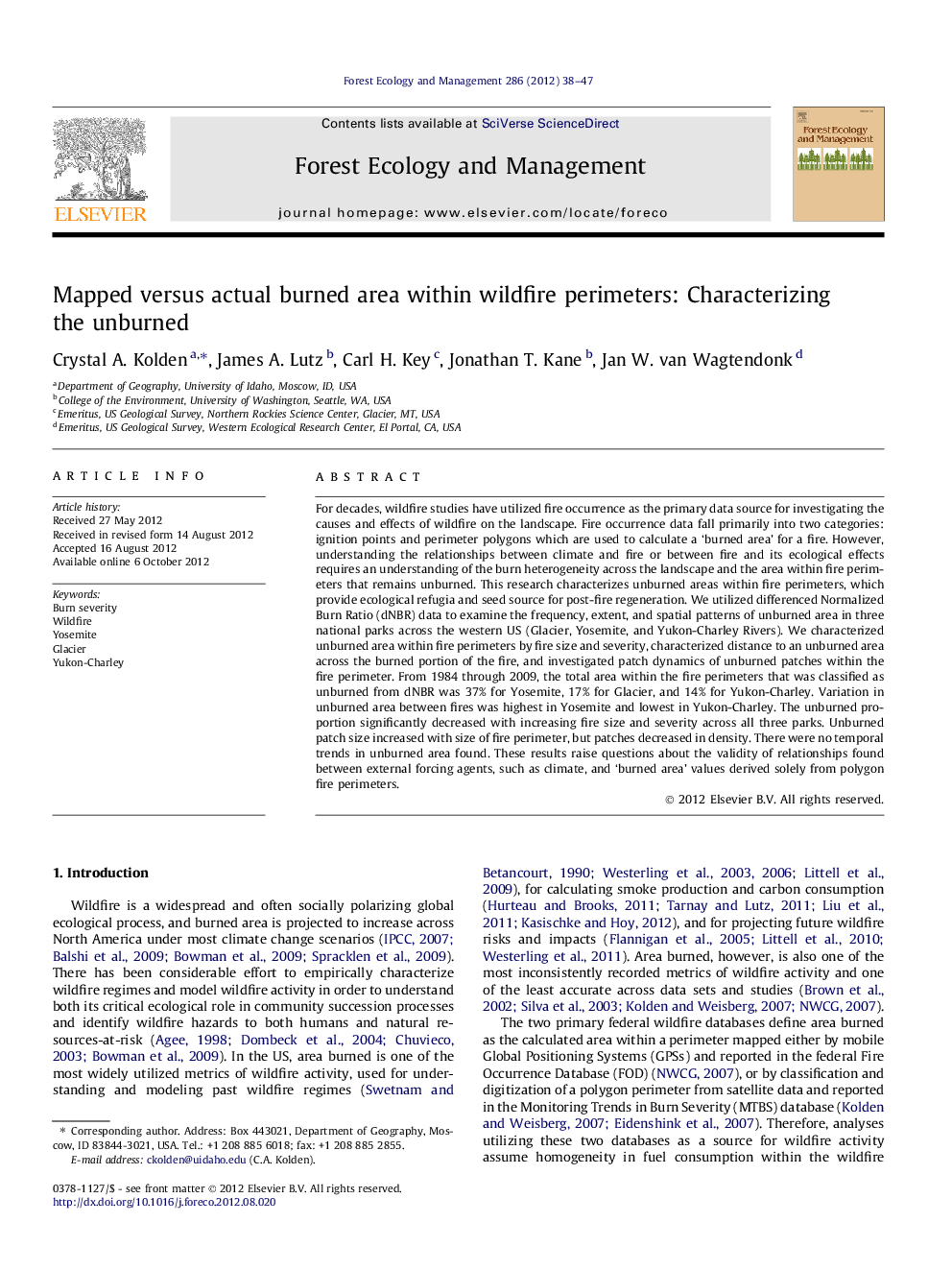| Article ID | Journal | Published Year | Pages | File Type |
|---|---|---|---|---|
| 87374 | Forest Ecology and Management | 2012 | 10 Pages |
For decades, wildfire studies have utilized fire occurrence as the primary data source for investigating the causes and effects of wildfire on the landscape. Fire occurrence data fall primarily into two categories: ignition points and perimeter polygons which are used to calculate a ‘burned area’ for a fire. However, understanding the relationships between climate and fire or between fire and its ecological effects requires an understanding of the burn heterogeneity across the landscape and the area within fire perimeters that remains unburned. This research characterizes unburned areas within fire perimeters, which provide ecological refugia and seed source for post-fire regeneration. We utilized differenced Normalized Burn Ratio (dNBR) data to examine the frequency, extent, and spatial patterns of unburned area in three national parks across the western US (Glacier, Yosemite, and Yukon-Charley Rivers). We characterized unburned area within fire perimeters by fire size and severity, characterized distance to an unburned area across the burned portion of the fire, and investigated patch dynamics of unburned patches within the fire perimeter. From 1984 through 2009, the total area within the fire perimeters that was classified as unburned from dNBR was 37% for Yosemite, 17% for Glacier, and 14% for Yukon-Charley. Variation in unburned area between fires was highest in Yosemite and lowest in Yukon-Charley. The unburned proportion significantly decreased with increasing fire size and severity across all three parks. Unburned patch size increased with size of fire perimeter, but patches decreased in density. There were no temporal trends in unburned area found. These results raise questions about the validity of relationships found between external forcing agents, such as climate, and ‘burned area’ values derived solely from polygon fire perimeters.
► We characterize wildfire unburned area in three North American forest ecosystems. ► Fire perimeters include a mean 13–37% unburned area in our study areas. ► Proportion of unburned area decreases with greater fire severity. ► Unburned area is important ecologically but is overlooked in wildfire research.
